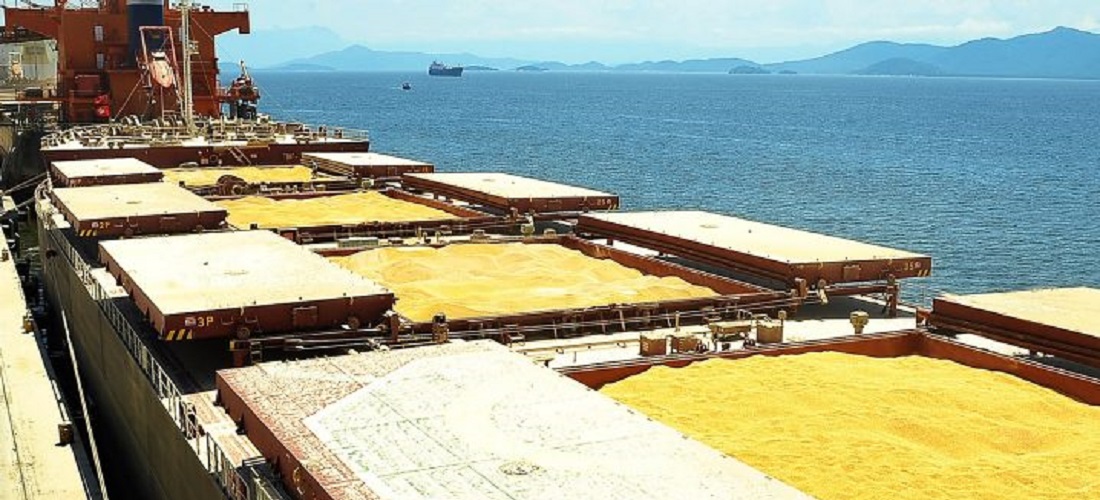
China’s soybean demand set to slacken in H1 on shrinking sow herd
Jan, 06, 2022 Posted by Gabriel MalheirosWeek 202201
China’s soybean demand is expected to be sluggish in the first half of 2022 on the back of weakening crush margins, which is likely to dampen the euphoria surrounding record demand forecasts.
While the US Department of Agriculture projects China to import 100 million mt of beans in the 2021-22 business year, S&P Global Platts Analytics sees the import volumes at a record 102 million mt on the back of strong hog herd growth in the country.
However, many China-based crushers are not that optimistic.
China is heavily dependent on soybean purchases as it processes more than 80% of imported beans into animal feed, but with the country’s sow herd on a downtrend over the last few months, the crushers expect the oilseed demand to slacken at least in the first half of 2022.
China’s fledgling pig population is recovering from the adverse impact of the African swine fever epidemic, which first emerged in the country in August 2018 and resulted in the loss of over 50% of its swine population within a year.
Total soybeans imported by China from January through November were estimated at 87.65 million mt, down 5.5% on the year, according to the customs data.
Check below the track record of Brazilian soybean exports to China from January 2019 to November 2021. The data are from DataLiner.
Brazilian Soybean Exports (HS 1201) to China | Jan 2019 to Nov 2021 | WTMT
Source: DataLiner (click here to request a demo)
Declining hog herd
Animal feed demand was at the core of China’s voracious appetite for soybeans in the last decade, but declining hog herd in the latter half of 2021 has resulted in slackening of soy-based pig feed demand.
According to the Ministry of Agriculture and Rural Affairs, or MARA, China’s sow herd at the end of November was estimated at 42.96 million heads, down 1.2% on the previous month.
The breeding sow herd has been on a consecutive negative growth since July 2021, MARA’s data showed.
Typically, there is a six-month lag between the pig herd’s negative growth and the resultant slowdown in pig feed purchases. Therefore, all indications point to sluggish demand for soybean-based animal feed, at least in H1 2022.
Pig oversupply has caused pork prices to slide in 2021, pushing hog margins into negative territory, which in turn has pressured the crush margins.
According to Platts assessments, the monthly average of China’s gross soybean crush margin has been estimated at negative 5.8 $/mt between June through December 2021, compared with 11.8 $/mt in the first five months of the year.
Freight volatility may alter buying pattern
Soaring freight rates have been taking a larger share of input costs for soybean trade in China. And this trend is likely to persist in 2022.
In 2021, the average freight rate of Brazil to North China had increased more than 60% on the year as fuel prices spiked and the supply chain bottlenecked amid frequent port congestion.
Soybean demand coverage for January 2022 shipment is only 76% done, compared with 100% in the same period in 2021, as volatile freight costs have made crushers very cautious.
Facing negative margins since mid-2021, crushers postponed their soybean purchases and waited for better margins.
However, the margins didn’t improve as the freight rates surged 100% on the year in the last two quarters in 2021, Platts data showed.
China-based traders are concerned that the freight rates are showing no signs of easing going into 2022, especially with the re-emergence of COVID-19 in the country.
“With such uncertainties prevailing amid declining crush margin, the Chinese soybean buyers will continue to postpone their usual purchasing plans and take more opportunistic strategies to secure a better margin later,” a China-based beans trader said.
Source: S&P Global Platts
To read the full original article please visit: https://www.spglobal.com/platts/en/market-insights/latest-news/agriculture/010522-commodities-2022-chinas-soybean-demand-set-to-slacken-in-h1-on-shrinking-sow-herd
-
Dec, 01, 2023
0
Minister seeks international investment to create new ports in Brazil
-
Apr, 11, 2023
0
Nearly a quarter of Brazil’s sugar exports go to Arabs
-
Oct, 18, 2022
0
Brazil orange juice exports up 3.24%
-
Economy
Oct, 05, 2022
0
WTO Predicts Major Slowdown in Global Trade Growth


